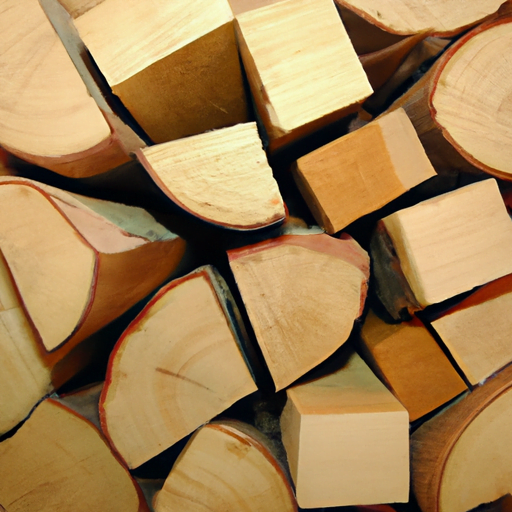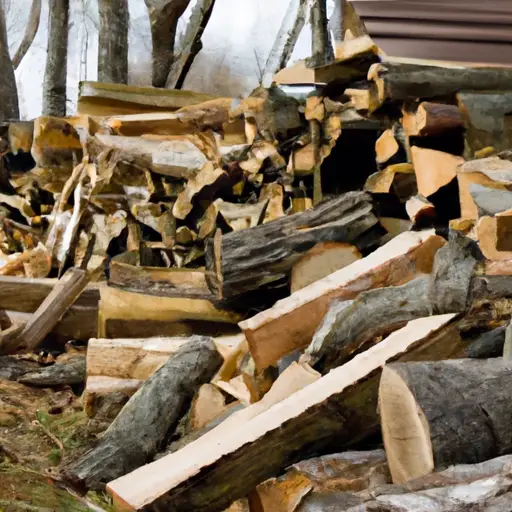So, you’re thinking of building your very own off-grid cabin? That’s awesome! There’s something incredibly fulfilling about creating your own space in the middle of nature. One of the key materials you’ll need for your cabin is wood. But how much wood do you actually need? Well, that’s exactly what we’re going to talk about in this article. By the end, you’ll have a better idea of how much wood is essential for building your off-grid cabin.
When it comes to off-grid living, having a sturdy and well-insulated cabin is crucial. Wood is not only a renewable and sustainable resource, but also a fantastic option for building cabins. The amount of wood you’ll need will largely depend on factors like the size of your cabin, the desired level of insulation, and the type of wood you choose. In addition to the walls, you’ll also need wood for the flooring, roof, and any additional structures like decks or porches.
To get an accurate estimation of the amount of wood you’ll need, it’s best to consult with a professional or use online resources that provide wood building calculators. These calculators take into account various factors and can help you determine the exact amount of wood required for your specific cabin design. So, before you start chopping down trees or buying lumber, take some time to research and plan accordingly. In the end, you’ll have a cozy and beautiful off-grid cabin built with just the right amount of wood.
Essential Wood Amount for Building Your Off-Grid Cabin
If you have decided to embark on the adventure of building your own off-grid cabin, determining the wood requirements for your project is an important step. The amount of wood you will need depends on various factors, including the square footage of your cabin, the type of wood you choose, and the structural elements involved. In this article, we will guide you through the process of calculating the wood amount for your off-grid cabin, considering different wood types, and exploring cost-saving options.
Calculating the Square Footage of Your Cabin
Before you can determine the amount of wood you will need, you must first calculate the square footage of your cabin. To do this, measure the dimensions of each room. Start by measuring the length and width of each room and multiply the two measurements together to get the square footage of that room. Repeat this process for each room and then add up the square footage of each room to obtain the total square footage of your cabin.

Determining the Type of Wood You Will Need
Once you have calculated the square footage of your cabin, the next step is to determine the type of wood you will need. Understanding the different types of wood available is crucial in making an informed decision. Consider factors such as durability and strength when choosing the type of wood. Some popular options for cabin construction include cedar, pine, and oak.
Cedar is often chosen for its durability and natural resistance to decay and insects. Additionally, cedar has a pleasant aroma that adds to the rustic appeal of a cabin. Pine is another commonly used wood for cabin construction. It is a cost-effective option and has good strength and durability. Oak, on the other hand, is a hardwood that provides excellent strength and durability, making it suitable for beams and other structural elements.
Considering the Structural Elements of Your Cabin
To estimate the wood quantity accurately, it is essential to consider the structural elements of your cabin. Assess the framework and support system during the planning stage. Take into account the number of walls, roofs, and floors for which you will need wood. Each of these elements requires a specific calculation method to determine the wood amount accurately.
Calculating Wood for Exterior Walls
To calculate the wood needed for your exterior walls, measure the length and height of each wall to obtain the square footage of each wall. Multiply the square footage by the desired thickness of the walls to determine the volume of wood required. Additionally, consider the number of windows and doors on each wall and subtract their square footage from the total to adjust the wood quantity accordingly.
Determining Wood Requirements for Interior Walls
Calculating the wood amount for interior walls follows a similar process to exterior walls. Measure the length and height of each interior wall and multiply them together to obtain the square footage. Multiply the square footage by the desired thickness of the walls to find the volume of wood needed. Also, consider any openings in the walls, such as doorways or arches, and subtract their square footage from the total.
Estimating Wood Amount for the Cabin Roof
To estimate the wood amount needed for your cabin roof, you will need to determine the square footage of the roof surface. Measure the length and width of the roof, calculate the square footage, and multiply it by the desired roof thickness to obtain the volume of wood required. Don’t forget to consider any additional structural elements such as trusses or rafters when determining the wood amount for your cabin’s roof.
Calculating Wood Needs for the Cabin Floor
When it comes to calculating the wood quantity for your cabin floor, measure the length and width of each room’s floor space and multiply these measurements together to obtain the square footage. Multiply the square footage by the desired floor thickness to determine the volume of wood required for the floor.

Additional Considerations for Wood Amount
When determining wood requirements for your off-grid cabin, it is crucial to consider wastage due to cuts and imperfections. This will ensure that you have enough wood for the project. Additionally, estimating the wood needed for doors and windows is essential. Measure the dimensions of each door and window and calculate the square footage. Multiply this by the desired thickness and subtract it from the total wood required for walls or floors, as previously calculated.
Sourcing Wood for Your Off-Grid Cabin
Once you have determined the wood amount you will need, it’s time to source the wood for your off-grid cabin. Explore local suppliers and sawmills to find the best quality wood at reasonable prices. Consider sustainable and eco-friendly wood options to minimize the impact on the environment. This may include looking for suppliers who practice responsible forestry or opting for reclaimed wood.
Cost Considerations for Wood
As with any construction project, cost considerations are essential. Calculate the budget for wood materials by multiplying the wood price per square foot by the total square footage of your cabin. Additionally, explore cost-saving options such as using second-hand or recycled wood, which may be available at a lower cost. Be sure to factor in the quality and suitability of the wood when making cost-saving decisions.
Maintaining and Preserving Wood in Your Cabin
Once your off-grid cabin is built, it is important to maintain and preserve the wood to ensure its longevity. Apply protective treatments, such as stains or sealants, to prevent rot and decay caused by moisture. Regularly inspect the wood for any signs of damage or wear and perform necessary maintenance practices, such as resealing or refinishing, if needed. By taking proper care of your cabin’s wood, you can ensure that it withstands the test of time.
Conclusion
Determining the essential wood amount for building your off-grid cabin is a crucial step in the construction process. By calculating the square footage of your cabin, determining the type of wood you need, considering the structural elements, and estimating the wood needs for specific cabin elements, you can ensure that you have the necessary materials for a successful build. Remember to factor in additional considerations, such as wastage and the wood needed for doors and windows. By sourcing wood responsibly and considering cost-saving options, you can make your cabin-building project a reality. Finally, by properly maintaining and preserving the wood, you can enjoy the beauty and functionality of your off-grid cabin for years to come.




